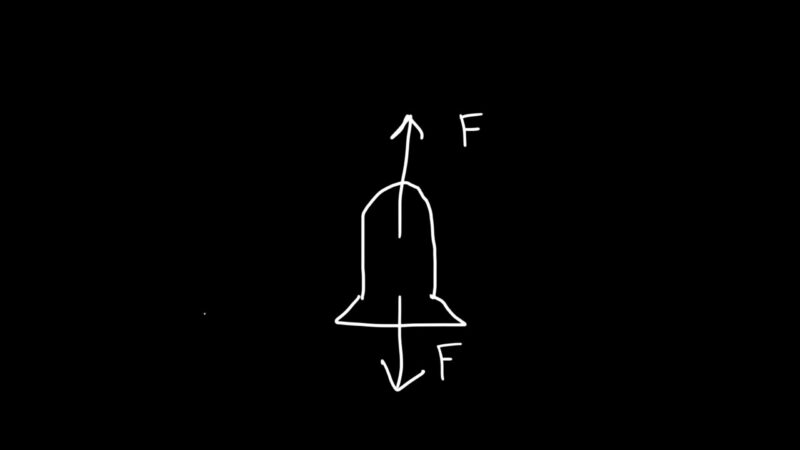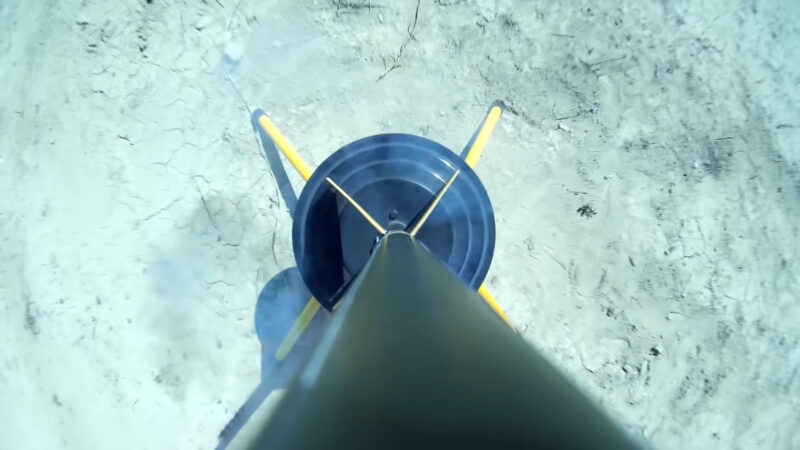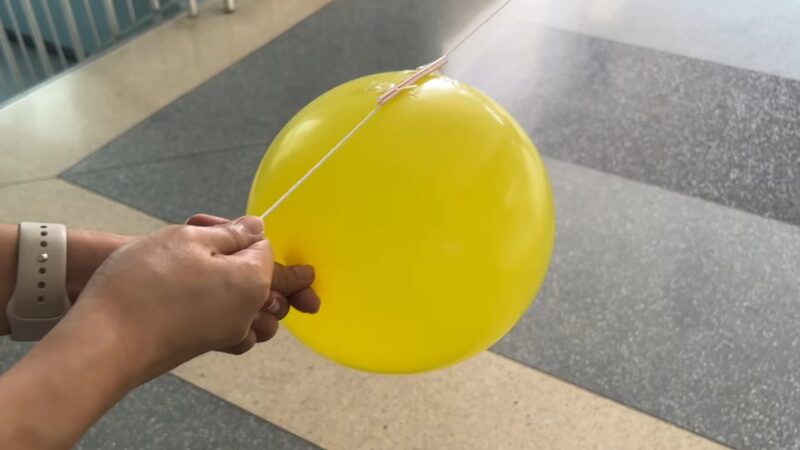Balloons have captivated our imagination for decades, becoming a symbol of celebration, joy, and even science. When combined with the awe-inspiring mechanics of rockets, balloons offer a wonderful hands-on experience that illustrates core scientific principles.
For families, educators, and kids at heart, balloon rockets serve as both an entertaining and educational activity. Rockets, whether they soar through the night sky on New Year’s Eve or help astronauts travel to space, operate on fundamental principles.
By exploring these principles, we can create fun, hands-on experiments like balloon rockets.
The Magic of Newton’s Third Law
Sir Isaac Newton’s laws of motion serve as the foundation for our understanding of how objects move. His third law, in particular, offers a simple yet profound explanation for the movement of rockets and balloon rockets alike.
According to NASA, Newton’s Third Law states that for every action, there is an equal and opposite reaction. This means that the force exerted in one direction produces an equal force in the opposite direction.
In the context of our balloon rockets, when air is released from the balloon, it propels the balloon in the opposite direction, showcasing this law in action. By using everyday items like balloons, yarn, and straws, we can visualize and interact with these scientific principles.
When the balloon is released and air flows out, it creates a force that propels the balloon in the opposite direction. The setup might be simple, but the lessons it imparts about physics are invaluable.
The Role of Propulsion in Rocket Movement

Propulsion is the driving force behind rockets. It’s the push that rockets need to overcome Earth’s gravity and the resistance of our atmosphere.
According to the Smithsonian National Air and Space Museum, propulsion in rockets comes from the expulsion of fast-moving fluid from a nozzle. This fluid can be a mixture of ignited fuel and oxidizer or simply compressed air, as in the case of our balloon rockets.
When this fluid (or air) is expelled at high speed, it pushes the rocket forward. Balloons, while not as complex as space rockets, mirror this propulsion system. The stored air inside a balloon acts as the propellant.
When the balloon is let go, the rapid exit of the air propels the balloon in the opposite direction. This simple mechanism provides a tangible example of the forces at play in real rockets.
Crafting Your Own Balloon Rocket
Making a balloon rocket is a fun experiment that blends creativity and scientific knowledge, making it ideal for a science fair project. Follow this step-by-step guide to craft your balloon rocket, whether at home or in school.
Materials You’ll Need
Introduction: The beauty of balloon rockets lies in their simplicity. With just a few household items, you can set up your own rocket experiment.
- Balloons: These act as your rocket’s fuel tank.
- Yarn: Ideally about 6 feet long, this serves as your rocket’s flight path.
- Straw: This helps guide the balloon along the yarn.
- Tape: To secure the balloon to the straw.
- Scissors: For any necessary adjustments.
- 2 chairs: To stretch and anchor the yarn.
With these materials in hand, you’re all set to craft your rocket.
Setting Up and Launching Your Rocket

Introduction: The setup for this experiment is straightforward, allowing young scientists to be involved in every step.
- Preparation Phase: Secure one end of the yarn to a chair. Next, thread the straw onto the yarn, ensuring it moves freely. Finally, tie the other end of the yarn to the second chair.
- Rocket Assembly: Inflate the balloon without tying it. While holding the balloon’s opening to keep the air in, tape it to the straw. This setup ensures the balloon moves smoothly along the yarn when released.
- Launch: Move the balloon to one end of the yarn so it touches a chair. Let the balloon go, and watch as it zooms across the room!
This simple setup showcases the principles of propulsion and Newton’s Third Law. Kids and adults alike will be thrilled with the balloon’s rapid journey.
Extending the Fun: Rocket-Inspired Activities

If you’ve enjoyed launching balloon rockets, there are other exciting and educational rocket-based activities to explore.
DIY Rocket Launcher
Introduction: Propel rockets using a simple PVC pipe and foot pump setup.
According to the PBS Parents, you can craft a DIY rocket launcher using easy-to-find materials like PVC pipes, plastic bottles, and a foot pump. This hands-on activity allows kids to experiment with pressure and propulsion while launching their homemade rockets skyward.
Straw Rockets
A less complex alternative to balloon rockets, but equally fun.
According to Science Sparks, straw rockets are made by wrapping paper around a pencil to form a ‘rocket’ and then launching it using a straw. By blowing through the straw, the air propels the paper rocket forward. It’s a fantastic way to discuss force and aerodynamics with young learners.
Balloon Rocket Car
Add wheels to the equation for an exciting twist on the classic balloon rocket.
According to the California Science Center, you can craft a balloon rocket car using simple materials like CDs for wheels and a cardboard body. When the balloon is released, the escaping air propels the car forward, making it an excellent lesson in motion and energy.
Frequently Asked Questions (FAQ)
Why does the balloon need to be untied for the rocket to work?
When the balloon is untied, it allows the air inside to escape rapidly when released. This escaping air creates the propulsion force needed to move the balloon along the yarn.
Can I use string instead of yarn for the balloon rocket’s flight path?
Yes, you can use string, but the yarn is often smoother and can allow for a more frictionless journey for the balloon. However, any similar material that can be stretched taut will generally work.
How can I increase the speed of my balloon rocket?
The speed of the balloon rocket is influenced by the amount of air in the balloon and the smoothness of the flight path. Ensure the yarn is taut and consider using a larger balloon or increasing the amount of air for more speed.
Is it safe to use helium instead of air in the balloon rocket experiment?
While helium will make the balloon rise, it doesn’t provide the same propulsion force as blowing air into the balloon. Moreover, helium is a non-renewable resource and is best saved for other applications.
Can this experiment be done outdoors?
Absolutely! Just ensure that the yarn is secured to stationary objects and that there isn’t strong wind which might affect the balloon’s path.
How does the length of the yarn impact the balloon rocket’s travel?
A longer yarn can allow the balloon to travel further but might reduce the speed if the balloon runs out of air before reaching the end. Adjusting the length of the yarn can help in understanding distance and force dynamics.
Final Words
In conclusion, balloon rockets are more than just a fun activity. They bridge the gap between play and learning, providing a hands-on way to understand complex scientific principles.
Whether at home, in the classroom, or at a science-themed party, they’re a surefire way to inspire wonder and curiosity in young minds.
